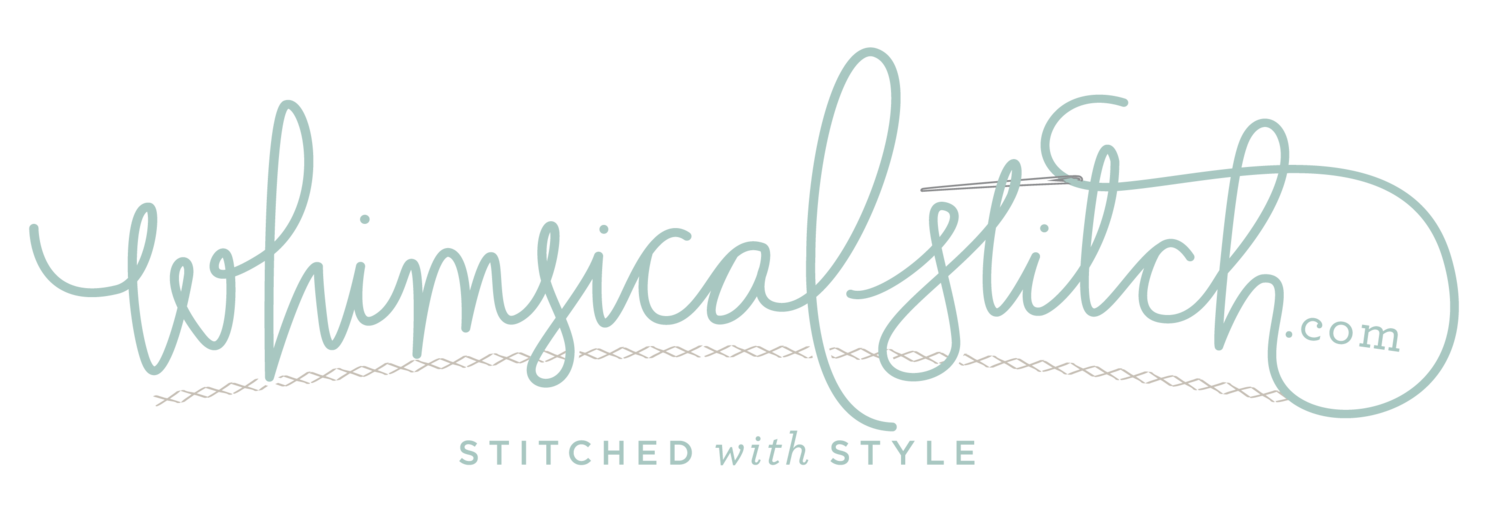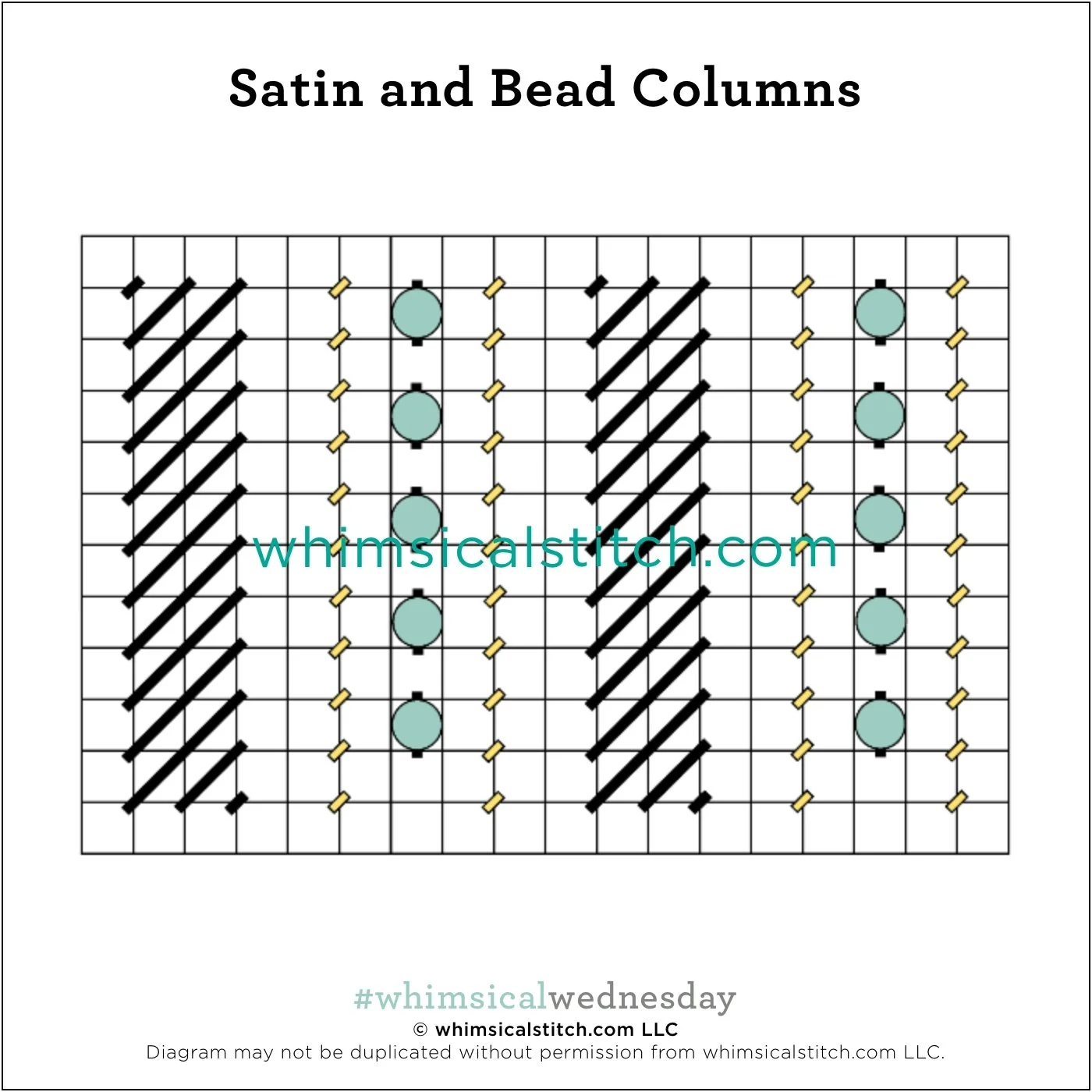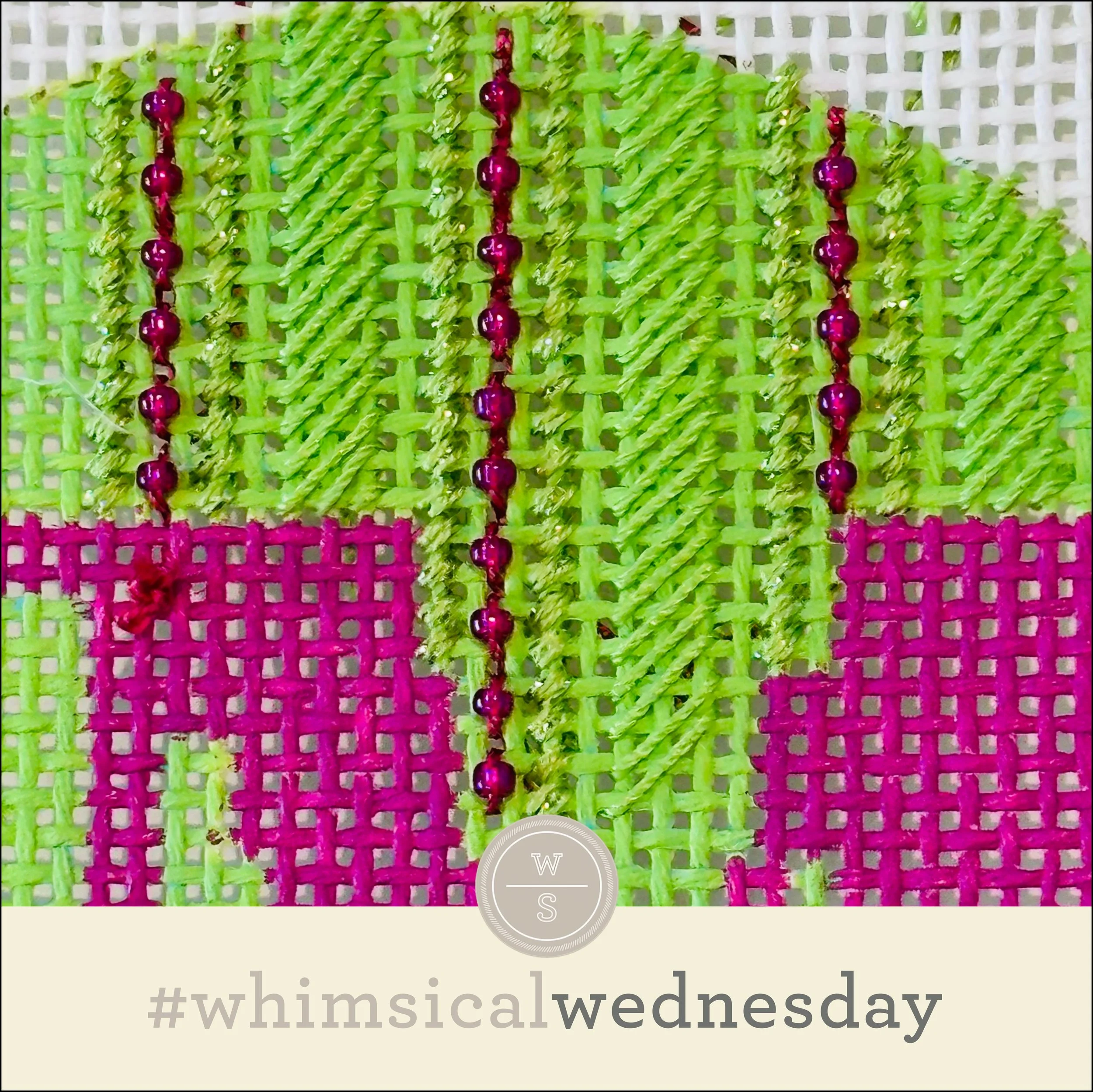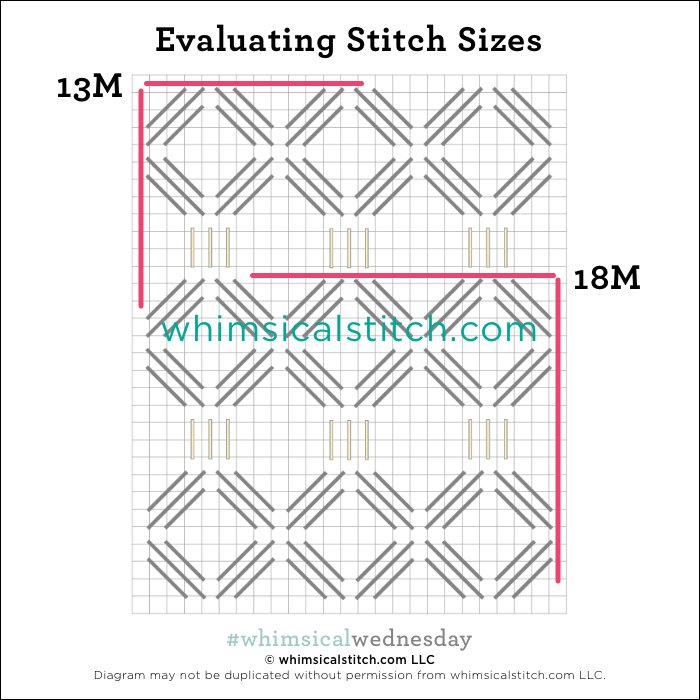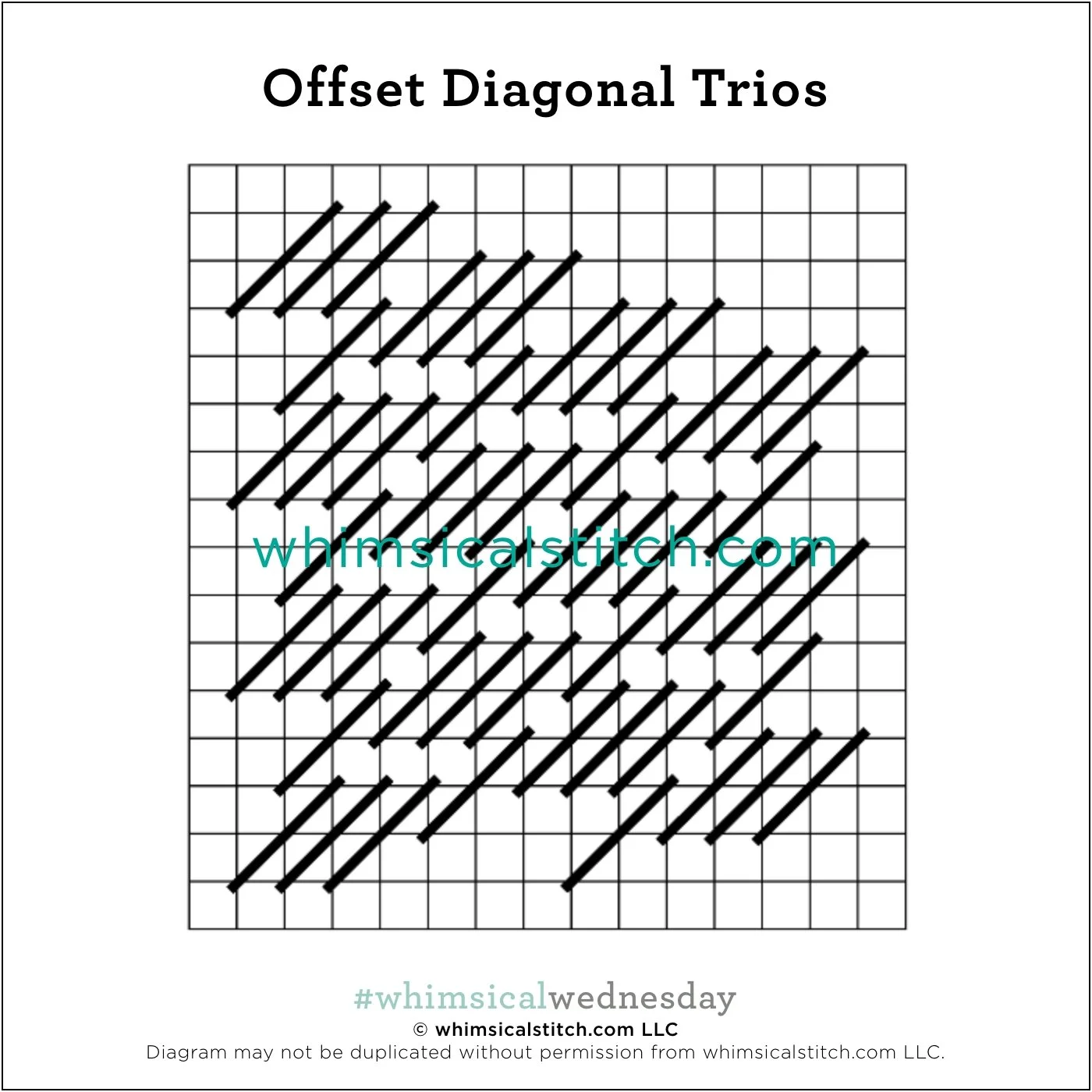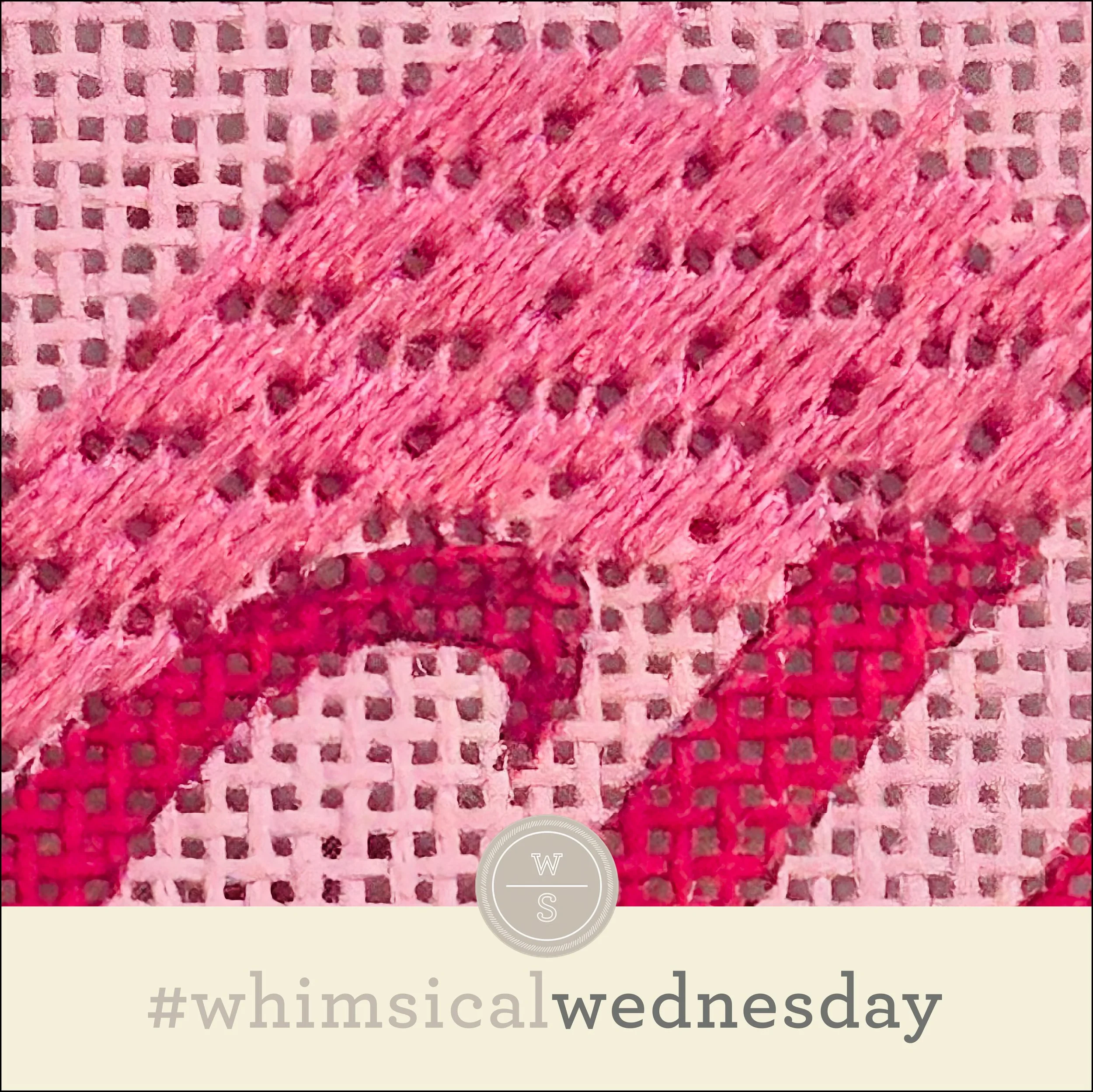Many people hoarded TP during COVID-19. Meanwhile, I hoarded La Croix and clear beading thread. I had a boatload of clear beading thread. And I can’t find a single spool of it, leading to an interesting experiment.
Today’s stitched sample features the background of an ornament. It includes green Elegance (black lines), two strands of Petite Silk Lame (yellow lines), and Sundance Beads (aqua circles), along with a single strand of Petite Silk Lame (on 13M).
As experiments go, it was chaotic (see above about my inexplicable lack of clear beading thread). Kreinik was my first choice, but I could not find a spool of the right pink in my (somewhat sizable) stash. I landed on Petite Silk Lame, and I do like the look of the solid line through the beads. However, this can also be accomplished with traditional colored beading thread as I don’t think Petite Silk Lame had enough metallic to stand out. I will try again with Kreinik at some point to see if that makes a significant difference.
And, no, I did not use a traditional beading needle. For the past couple of years, I’ve been using a size 28 needle for beading. It’s easier to thread and, while a little shorter than I prefer, I find it is easier to keep hold of. It did take a minute (or more) to get the Petite Silk Lame through the eye, but I was able to do so. I find it a better fit for size 11 beads. It works for Sundance 14/15 beads, but you may have to discard a few outliers that do not fit.
I hope you have the perfect spot for this stitch. Enjoy!
As you are auditioning stitches (from any stitch source), count the number of canvas threads on the diagram that match your mesh size. And there you have what an inch of the stitch will look like. Evaluate that against the area where you plan to use the stitch and make your final decision. If you start integrating this step into your stitch selection process, you may be surprised at how many stitches you think are large are much smaller than you realize.
By (sometimes) including this step in my own process, I find I am now integrating much longer stitches than I ever thought I would. I used to think a stitch six rows long was super big. I have very much changed my tune, which has helped me expand my creativity, especially for large-space stitches.
Today’s stitch diagram, along with all other #whimsicalwednesday and #smallspacesunday stitch diagrams, can also be found on a Pinterest board here. Be sure to follow whimsicalstitch.com on Facebook, Pinterest, Instagram, and Twitter.
If you like what you see on this blog, there's more. Mary’s Whimsical Stitches is a series of four books offering contemporary how-to collections of more than 200 stitches (in each volume) for all stitchers, regardless of skill level. All books include updated and sequenced diagrams from this blog, plus a collection of all-new stitches from private lessons and other class projects. Visit here to find a needlepoint retailer that carries my books.
New to needlepoint or looking for a refresher? Please download a handy how-to guide covering basic needlepoint stitches and stitch compensation techniques along with new top-line information on needlepoint materials and tools, how to handle threads, and other helpful needlepoint resources.
whimsicalstitch.com also sells Stitch Guides and Stitch Concepts for Melissa Shirley Designs, Zecca Designs, Sandra Gilmore, Purple Palm, Maggie, and Penny MacLeod, and many more. Click here to see the newest guides and click here to see the entire collection.
I hope you have the perfect spot for this stitch! Please enjoy! Have a wonderful #whimsicalwednesday!
A Note about Diagrams
I use color in diagrams to make them as clear as possible. The primary function of different colored lines is to illustrate a stitch sequence. For example, the layering of colors demonstrates you add them in that order. They can also provide ideas on integrating additional threads (one line for each color). Or, you can use the same thread for all color lines. That's where I encourage you to use your imagination for the space you are stitching!
